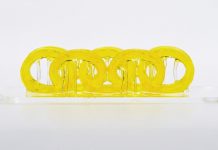
In a groundbreaking development at the EPFL’s School of Engineering, researchers have taken a big step towards creating computer chips that work more like the human brain and use much less energy.
Led by Aleksandra Radenovic and her team at the Laboratory of Nanoscale Biology, they’ve built an innovative device that could revolutionize how computers process and store information.
Computers today waste a lot of energy moving data back and forth between where it’s stored and the central processing unit – a problem known as the von Neumann bottleneck.
The human brain, however, doesn’t have this issue because it processes information right where it’s stored, using a complex network of synapses.
This is not just efficient but also saves a lot of energy.
The EPFL team’s creation, inspired by the brain’s efficiency, is a new kind of memristor. Unlike traditional memristors, which rely on the flow of electrons, this device uses ions – tiny charged particles – in water.
This approach is much closer to how our brains operate, making the device significantly more energy-efficient.
Their invention, known as a nanofluidic memristive device, acts like the synapses in our brains. It can switch between different states of electrical conductance, essentially turning on and off, by controlling the movement of ions through nano-sized channels.
This switching behavior allows it to store and process information.
The device is quite versatile, able to use different kinds of ions (like potassium, sodium, or calcium) to tune its memory characteristics. This means it can be adjusted to work in various ways, similar to how living organisms adapt to different needs.
Making this device involved creating a tiny pore on a chip, covered with layers of palladium and graphite to guide the ions. When a current runs through the chip, it directs ions towards this pore. The pressure from the ions creates a small blister that lifts the graphite layer, turning the device ‘on’.
This state remains even after the current stops, allowing the device to remember its previous state. Applying a negative voltage reverses this effect, resetting the device to ‘off’.
For the first time, the team managed to connect two of these devices, demonstrating how they can perform digital logic operations – the basic functions of computing – using ions instead of electrons.
Looking ahead, the researchers aim to link many of these devices with water channels, creating circuits that not only resemble the brain’s network more closely but also have built-in cooling systems.
This innovation could pave the way for bio-compatible devices, opening new possibilities in medical technology and beyond, all while using the green energy of water.



